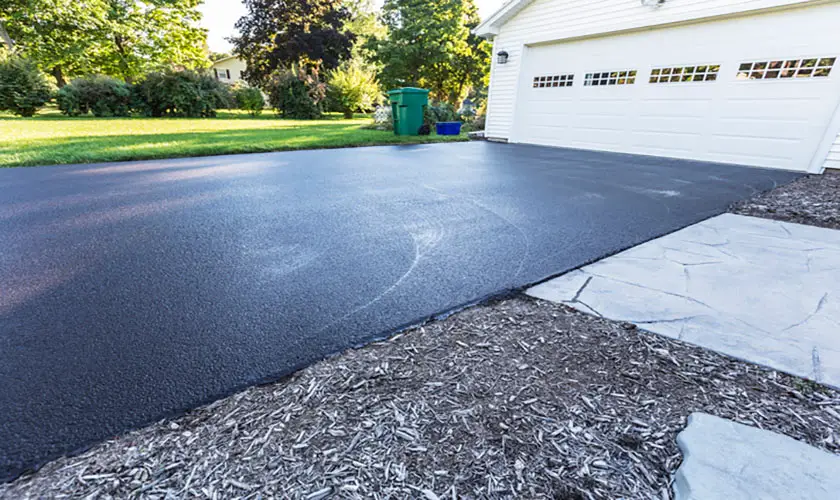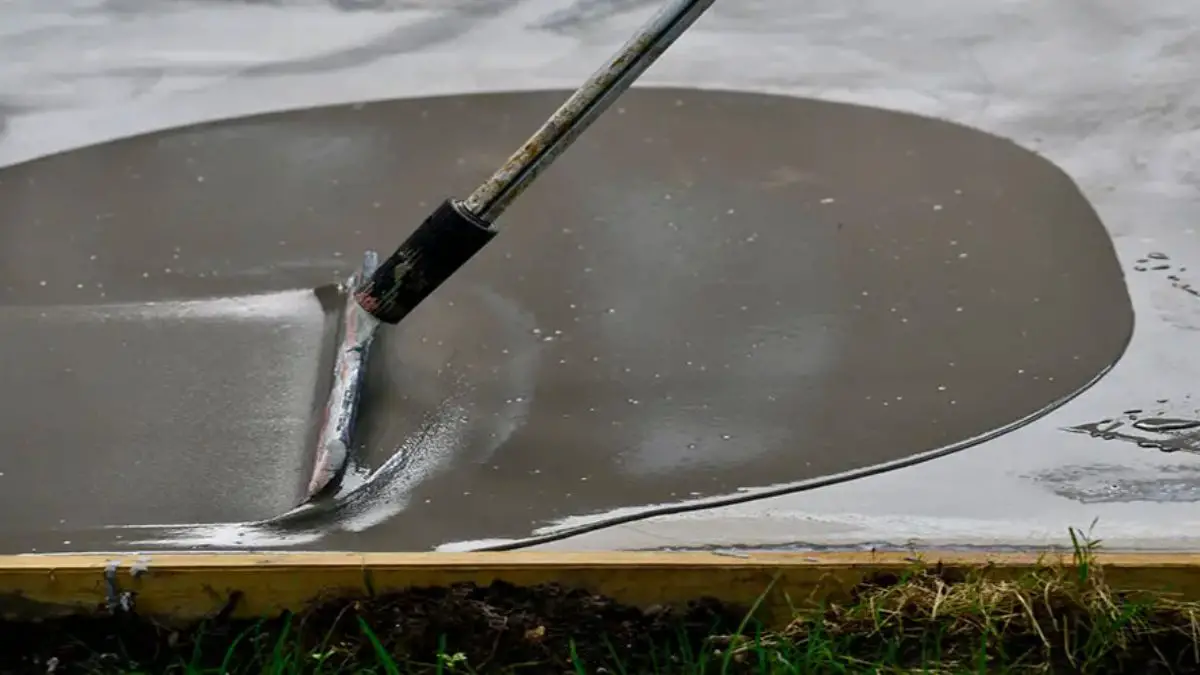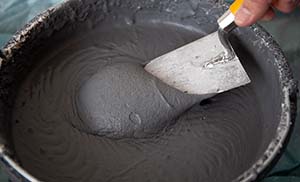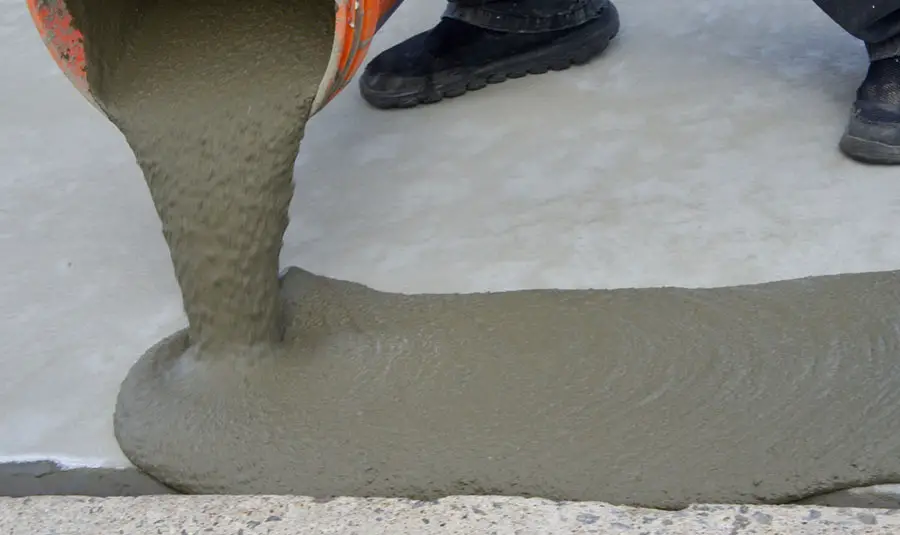
Do you want to bond concrete to another material or another concrete and prevent it from sticking on the materials? The cement which you can use to make a concrete mix doesn’t have natural bonding agents.
On its own, concrete doesn’t easily bond. Concrete is very heavy and has immense compressive strength, but it has no qualities that naturally bond to other materials. If you want to bond wet concrete to dry concrete, you’ll need a boding agent like Liquid Nails or another construction adhesive.
Here, we’ll look at the bonding of concrete and what to use to ensure reliable bonding.
Does Concrete Stick to Concrete?
Concrete doesn’t have any natural bonding agents or adhesive. For this reason, concrete on its own won’t bond or stick well on another concrete material.
When you put concrete on top of another concrete layer, it’ll sit there as an independent layer without joining. It won’t produce a strong or serviceable floor. For this reason, you should use a very reliable concrete adhesive if you want to stick or bond two concrete.
How to Bond Concrete to Concrete
You can attach a new concrete over an old one. However, if there are unresolved issues with your old concrete, including frost heaves and cracks, they can be carried over to the new concrete. Below are some instances where you should not pour new concrete over old concrete:
- When there are tree roots on the way, that might cause existing concrete to move or lift
- If there is a staircase or door, that will interfere with adding some inches of cement
- When the concrete isn’t level, or there is a substantial crack
In the above cases, you must remove your old concrete and resolve the underlying problem, such as leveling the concrete before you continue putting in new concrete.
However, there are cases where you should never think twice about pouring new concrete over old concrete. Below are a few areas where it is typically okay to pour new concrete over old:
- In the driveway or basketball court
- A pathway to the house or stepping stones
The Process of Attaching New Concrete to Old Concrete
Even though it’s possible to attach an old concrete to a new one, You must do it the best way to prevent separation or cracks from ever happening. If you ignore this, you’ll have to replace the concrete sooner than you expected.
You can use rebar to pin the new concrete to the old one if you want to prevent it from cracking. Rebar means the reinforcing bar. You employ the bars in strengthening and supporting the bond between slabs.
For heavy concrete, you should always go for heavy rebar. Follow the steps below keenly if you want to bond your new concrete to the old one successfully:
1. Start by drilling holes of ⅝ diameter into your old concrete at least 6 inches deep. Ensure that you drill the holes with 12 inches in the center. If the joint is wider than it’s tall, place your holes horizontally. When the joint is taller, then put it vertically.
2. To prevent any cases of chipping, ensure that the holes are 6 inches from the edges.
3. You can then proceed to water in the holes that you drilled.
4. Insert epoxy injections into the backs of your holes while ensuring that it’s enough to fill your holes halfway.
5. Proceed to twist 12 inches of rebar into the holes. Ensure that the epoxy coat is even around the rebar and surrounds every inch in the hole.
6. Patch the holes using duct tape by sticking the tape through the rebar end. Bring the tape down to your hole to restrict an epoxy leakage during the curing process.
7. Employ metal primer for taping the exposed rebar pieces to repent any rusting cases.
8. You can now pour your new concrete and allow it to flow surrounding the rebar pins.
How Thin Should The New Concrete Be?
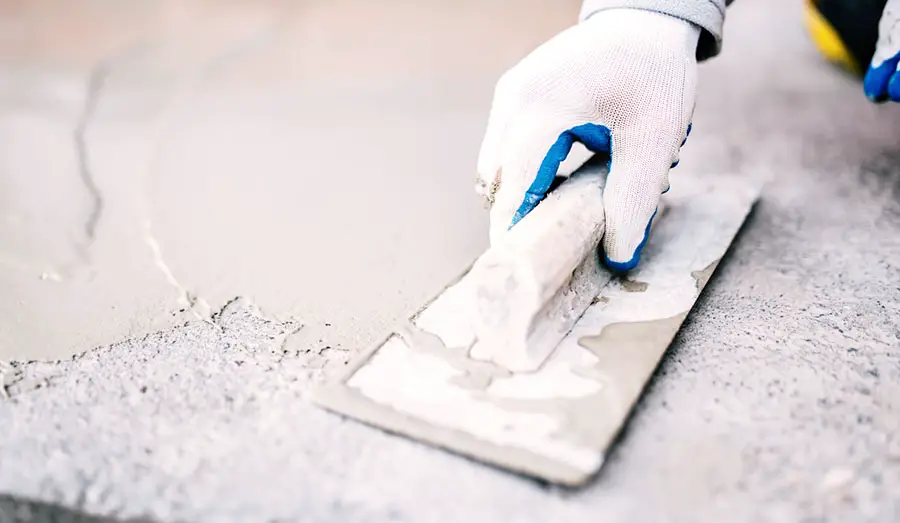
The thinnest layer of new concrete that you should apply to the old concrete is about 2 to 2 ½ inches. It is the minimum thickness that applies to pouring any concrete.
When you want to consider the exact thickness of your new concrete, it would be best to look at the surrounding environment where your concrete should be. For instance, if you have a staircase or door, you should remove all the old concrete and start afresh.
Downsides to Bonding Concrete to Concrete
Even though attaching a new concrete to an old one comes with several benefits, there are challenges that you should understand for effective performance. Below are some of the cons:
- Maintenance: Attaching a new layer of concrete over an old one eliminates the low maintenance property that concrete is popular for. For instance, pouring new concrete on the slab will bring frost heaves into the equation. If you want to gain good results, you must understand the perfect thickness for your concrete slab.
- Short lifespan: Concrete lasts for many years, and in most cases, you may never experience any challenges with it. However, attaching a new concrete to the existing one might cause problems that could reduce its lifespan.
- Raising the level: As we have highlighted earlier, you should be keen on staircases and doors that might ruin the chances of attaching concrete on top. It would help if you understood your surroundings before adding concrete on any surface since it could raise the current level. It could lead to hazards such as tripping, more so in walkways.
- Bonding: There will be cracks if you don’t separate the old concrete from the new one. Any cracks in the old concrete will, without question, spread to the new one.
What Do You Use to Bond Concrete to Concrete?
As we have seen above, the concrete mix doesn’t have natural bonding agents. If you bond a concrete material to another material, it’ll separate and not bond as expected.
For the concrete materials to bond effectively to each other, you should apply a bonding agent of adhesives. There are so many quality adhesives that you can choose from on the market.
A bonding adhesive should be painted on the existing concrete first for the fresh concrete to adhere successfully.
It is also the case for floor repair and maintenance, where concrete fills gaps resulting from damage. The new concrete won’t stick to the old concrete if you don’t use adhesives.
The bonding adhesive won’t function effectively if the concrete surface contains latitude (a dusty layer of fine aggregates and cement) or is contaminated with spillages, including grease and oil. You should prepare the concrete surface before you apply your bonding adhesive.
You can clean the concrete surface by using either vacuum shot blasting or pressure washing. Milling or grinding might be necessary if there are spillages that have seeped into the floor’s surface.
What Is The Best Concrete Glue?
As we have seen, using concrete adhesives or glue is the most economical and efficient way to attach concrete. Let’s look at some of the best concrete adhesives available on the market.
1. Loctite PL 500 Adhesive
If you are seeking an efficient, reliable, and versatile adhesive, then the Loctite Pl 500 adhesive is the ideal product for you. The product is easier to apply, and you won’t need to call a handyperson to help you out.
It’s also a premium quality adhesive for every landscaping needs. It’s ideal if you want to install cement pavement stones.
The product is also multipurpose and is employed in securing capstones and block walls. It’s also applicable in bonding concrete, brick stone timbers, wood, and metal.
You’ll find it being used primarily on joining areas having continuous water submersion, plastics, or zinc chloride treatments. Unlike other products, the Loctite PL 500 has a low odor making it ideal for you if you’re sensitive to strong smells or odors.
Amazingly, the product has a shelf life of 18 months if left unexposed. Its durability, therefore, proves value for money. You can use it in temperatures of between 0oF to 100oF. It’s also an all-weather product.
Features
- It’s versatile
- The product is ideal for all-weather applications
- It operates in temperatures range of 0 to 100 degrees F
- Its overall dimension is 2.5 x 1.88 x 11.25 inches
- It weighs 0.92 ounces
2. Gorilla Construction Adhesive
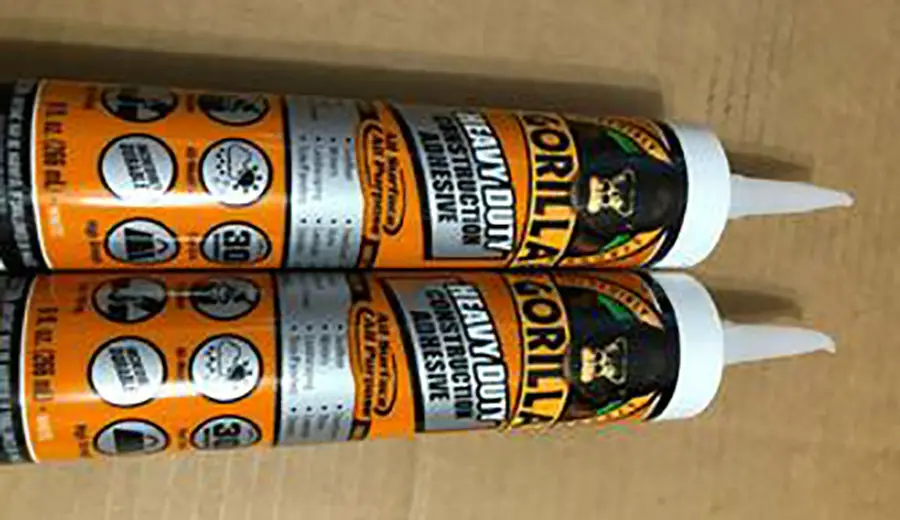
When you’re seeking to bind your indoors or outdoors, the best product you should consider is the Gorilla Construction adhesive. The Gorilla brand is very popular in the industry because of its regular supply of durable adhesive products.
First, the product is versatile and rough. It’s also an all-weather construction adhesive applied for heavy-duty bonding. The heavy-duty construction it offers makes it waterproof and durable. As a result, it’s the ultimate solution for both indoor and outdoor projects.
The Gorilla product takes a very short amount of time to bond, unlike some low-quality products that take a long to bond. Your project will be ready at least within thirty seconds of application.
The bond of this product is durable, firm, and strong. It means that you can employ it in different applications, including plastics, foam board, drywall, landscaping, masonry, mirrors, and more.
You can even paint or sand the surface with the glue remaining intact just after two days of application. If you’re sensitive to a strong smell, this product has a low odor. It’s 100% developed from materials that don’t have a solvent solution or water.
Features
- It’s versatile
- The product has a dimension of 1.92 x 1.92 x 11.28 inches
- It weighs 9 ounces
- Ideal for all-weather purpose
- It holds fast
- VOC approves the product
- It has less solvent, water, and odor
- It’s a 100% adhesive
3. Liquid Nails LN-2000 Adhesive

Most of the time, the outside environment is harsh to adhesives or glues, mainly due to water and heat. For this reason, you’ll need a binder that’ll hold well in such conditions during construction.
This product is an all-surface solution of hybrid technology that can bond almost anything. It’s durable and strong and can bond in almost all conditions, including cold, dry, wet, and hot weather. The product will offer you double strength compared to others.
The instant-grab technology forces the materials to be ready within 15 minutes of application. Liquid nails even outperform the Gorilla product.
The adhesive is reliable and offers an enduring bond, and, for this reason, it is ideal for both outdoor and indoor applications. Liquid nails contain low VOC elements and are safe for use. It’s therefore gentle and less disruptive to people with allergies.
It’s certified as a plasticizer and odor-free and thus safe for the environment and your health. The adhesive is also easy to use, and we recommend it highly as a high-quality solution.
Features
- It’s grey
- It bonds within 15 seconds
- Has a proven low odor
- The product weighs 15.2 ounces
- It has dimensions of 1.4 x 3.8 x 9 inches
4. PC Products 72561 LPC Adhesive
Most people don’t like to use an adhesive that has a strong smell. However, it isn’t easy to find a high-quality adhesive that is 100% free from odor.
It is where PC product 72561 comes into the equation. We recommend this product because of its mildest smell that you’ll never notice. You can therefore work for long hours without being irritated with a bad odor.
The adhesive also is multi-use when it comes to repairing and anchoring concrete surfaces. It supports rods, smooths, bolts, and rebar dowels.
The PC product 72561 adhesive offers value because it’s reliable and strong. Its moisture-resistant properties make it perfect for application in damp environments.
The versatility of this product makes it perfect for both outdoor and indoor applications. It functions under a temperature of between 35 degrees F to 115 degrees F.
As far as bonding is concerned, it has a 4 hour curing time and offers a work time of 20 minutes. The product is also durable and won’t come off during cleaning. When your concrete contracts or expands, it’ll withstand the changes without shrinking.
Features
- The product is versatile
- It complies with ASTM C881-99
- The product has a gray color
- It bonds within 20 minutes
- It weighs 8.6 ounces
- Boasts dimensions of 3.5 x 2 x 10.3 inches
Considerations When Selecting The Best Concrete Adhesive
There are things that you must focus on while selecting the best adhesive for your concrete.
- Cure or drying time: The drying time will determine the time you need to install the concrete. The curing time of most adhesives varies with quality. However, the best glue is zero dry rates meaning that it cures instantly after application.
- Easy to use: The adhesive that you choose should be easy to apply on the concrete. The product should therefore be neither thick nor thin.
- Size of concrete you wish to cover. The size of concrete will determine the product you select. Most products have the coverage application area indicated on the package.
- Durability: The durability or shelf life of most adhesives is about 18 months. However, the best product is one that you can store for years without quality degradation.
- Easy to clean: Here, water-based adhesives are easier to clean than solemn-based adhesives.
- Low odor: It isn’t easy to come across an adhesive that is 100% odorless. However, the strong odor isn’t appealing. You should therefore buy a product that has a low odor.
- Safety: When you buy an adhesive, check for its Volatile Organic Compounds (VOC) content. These compounds are harmful, especially with indoor applications. A lower VOC content would therefore be perfect for your application.
- Versatility: You should buy an adhesive that you can apply for different uses. For instance, go for a product that can bond granite, wood, decks, cement, metal, and bath surrounds.
Conclusion
As seen above, concrete won’t bond on another concrete material if you don’t apply an effective concrete adhesive. There are so many concrete adhesives on the market that you can select from to offer effective gluing functions. You can select from any of the products that we have highlighted above.
However, before you purchase a product, consider some factors such as versatility, durability, curing time, and odor of the product.


